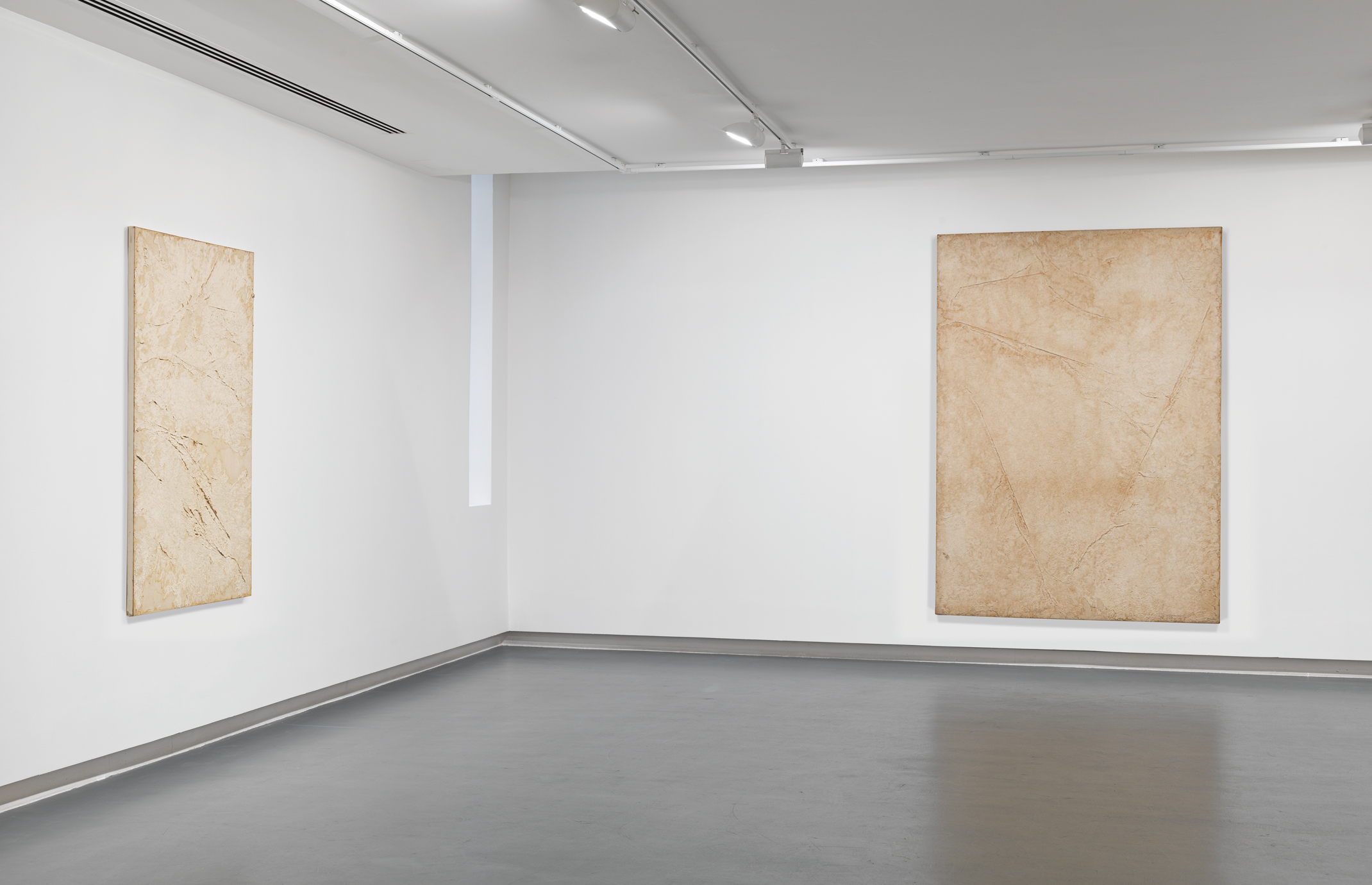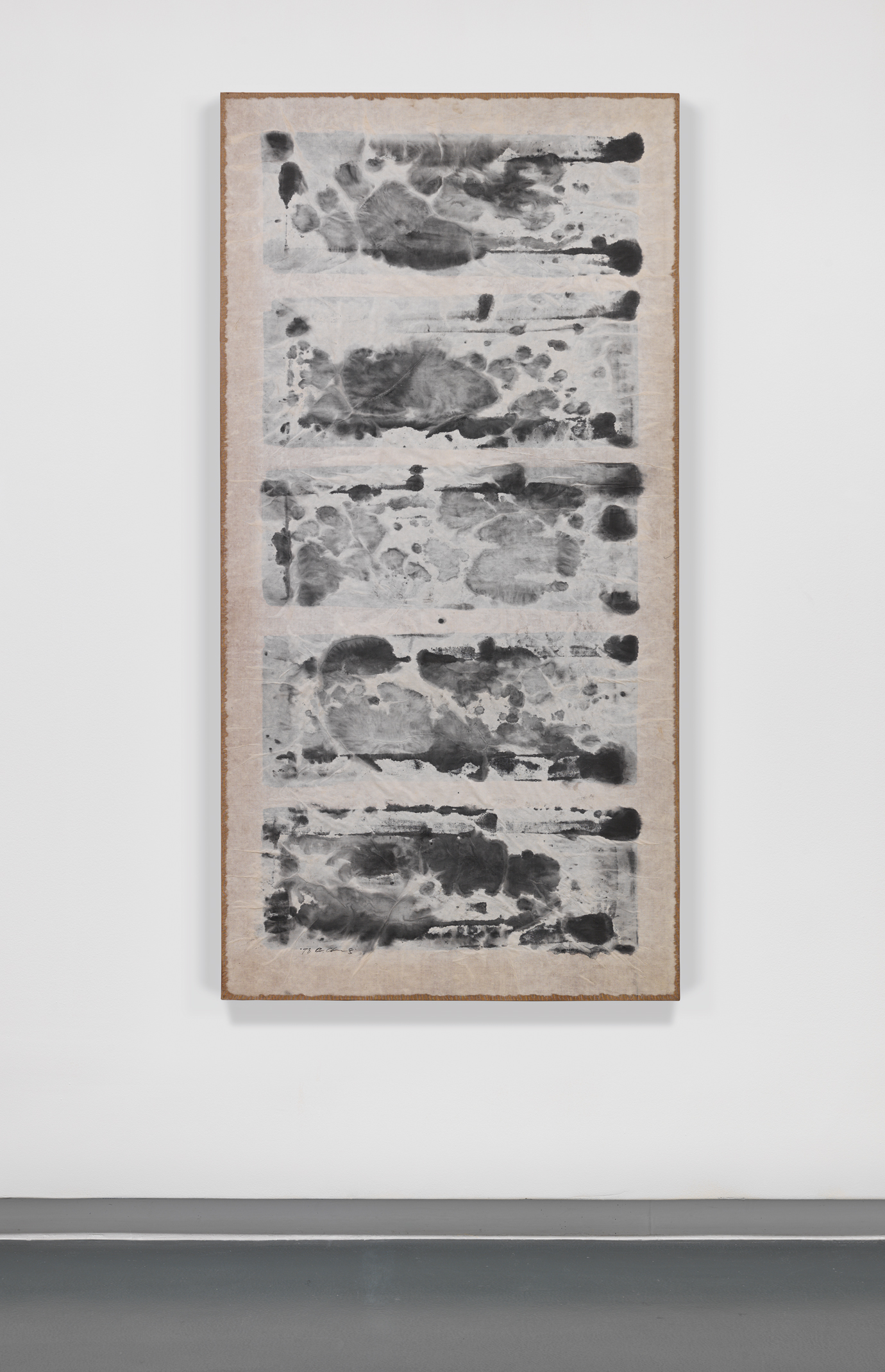
tak 86921,1986 and 86066, 1986
Chung Chang-Sup
tak 86921,1986
Best fibre on canvas, 152 x 92 cm
and tak 86066, 1986
Best fibre on canvas, 227.5 x 163 cm
search


Chung Chang-Sup
tak 86921,1986
Best fibre on canvas, 152 x 92 cm
and tak 86066, 1986
Best fibre on canvas, 227.5 x 163 cm
Like his contemporaries, Chung Chang-Sup's rejection of academic painting led to experimentation with geometric abstraction and informel, but it was his ‘discovery’ of tak paper in the 1970s that would come to define his art for over thirty years. Durable and made from the bark of mulberry trees, tak was traditionally used for painting and calligraphy; but it was its architectural use, to line floors, walls, windows and doors, that inspired Chung. The paper conjured the artist’s earliest memories of light and weather permeating his home and disrupting divisions between interior and exterior space. In Return – 77 N (1977), black ink seeps into fibrous crevices and unsuspecting folds of the artisanal material, divulging their sensuous intimacy.
Chung continued pursuing ‘oneness of self and material’ in the 1980s by working directly with tak fibres and sap, battering and kneading the material onto the surface of the canvas. Depicting ‘a world without depiction’, works such as Tak 9096 (1990) indicate ‘an alternative way to rediscover material, time, self and nature through their residues, traces and coincidences’.
This project was part of Sharjah Biennial 12
Chung Chang-Sup
1978
Mixed Media on canvas
180.5 x 90 cm


This publication was published on the occasion of Sharjah Biennial 12.

This publication is a guide for visitors of Sharjah Biennial 12: The past, the present, the possible.

Among the first artists to be educated in Korea after its liberation from Japanese occupation, Chung Chang-Sup was part of a generation of artists who transformed the future of contemporary art in Korea.